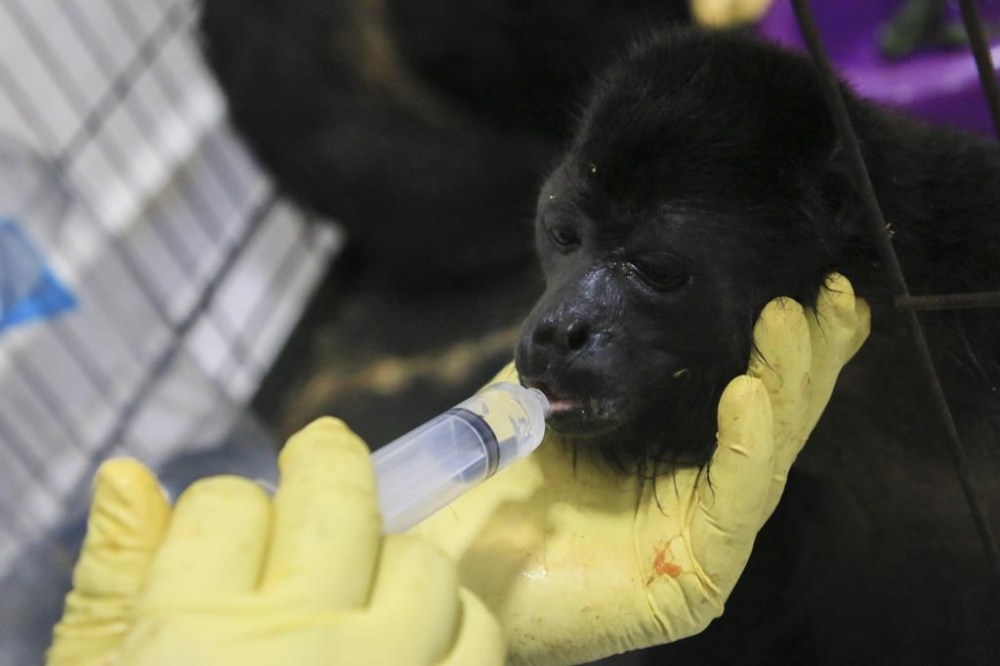The number of heat-related howler monkeys deaths in Mexico has risen to 157, with a few recovering
Advertisement
Read this article for free:
or
Already have an account? Log in here »
To continue reading, please subscribe:
Monthly Digital Subscription
$0 for the first 4 weeks*
- Enjoy unlimited reading on winnipegfreepress.com
- Read the E-Edition, our digital replica newspaper
- Access News Break, our award-winning app
- Play interactive puzzles
*No charge for 4 weeks then price increases to the regular rate of $19.00 plus GST every four weeks. Offer available to new and qualified returning subscribers only. Cancel any time.
Monthly Digital Subscription
$4.75/week*
- Enjoy unlimited reading on winnipegfreepress.com
- Read the E-Edition, our digital replica newspaper
- Access News Break, our award-winning app
- Play interactive puzzles
*Billed as $19 plus GST every four weeks. Cancel any time.
To continue reading, please subscribe:
Add Free Press access to your Brandon Sun subscription for only an additional
$1 for the first 4 weeks*
*Your next subscription payment will increase by $1.00 and you will be charged $16.99 plus GST for four weeks. After four weeks, your payment will increase to $23.99 plus GST every four weeks.
Read unlimited articles for free today:
or
Already have an account? Log in here »
Hey there, time traveller!
This article was published 27/05/2024 (548 days ago), so information in it may no longer be current.
MEXICO CITY (AP) — The number of heat-related howler monkeys deaths in Mexico has risen to 157, the government said, with a tragically small number of the primates treated or recovering.
A heat dome — an area of strong high pressure centered over the southern Gulf of Mexico and northern Central America — has blocked clouds from forming and caused extensive sunshine and hot temperatures all across Mexico.
Last week, environmentalists had reported that 138 of the midsize primates, known for their roaring vocal calls, had been found dead in the Gulf coast state of Tabasco since May 16. Almost two-thirds of the country are expected to see highs of 45 degrees Celsius (113 degrees Fahrenheit) on Monday.

Late Sunday the Environment Department reported that number had risen to 157, and that research was continuing into the causes of the deaths. But a wildlife biologist on the scene said it appeared to be heat stroke.
The department said deaths were occurring in both Tabasco and the neighboring state of Chiapas, and that 13 monkeys were under treatment and seven had been treated and released back into their habitat.
The department said some of the monkeys were being treated for dehydration, and that three were in serious but stable condition.
Moreover, with heat, fires, and deforestation hitting the trees where the howler monkeys live, it was unclear whether even releasing them could ensure their survival.
Wildlife biologist Gilberto Pozo attributed the deaths to a “synergy” of factors, including high heat, drought, forest fires and logging that deprives the monkeys of water, shade and the fruit they eat, while noting that a pathogen, disease or other factor can’t yet be ruled out.
Normally quite intimidating, howler monkeys are muscular and some can be as tall as 90 centimeters (3 feet), with tails just as long. Some males weigh more than 13.5 kilograms (30 pounds) and can live up to 20 years. They are equipped with big jaws and a fearsome set of teeth and fangs. But mostly they’re know for their lion-like roars, which bely their size.
There have also been reports from Mexico’s southeastern states of birds being affected by the heat.
With below-average rainfall throughout almost all the country so far this year, lakes and dams are drying up, and water supplies are running out. Authorities have had to truck in water for everything from hospitals to fire-fighting teams. Low levels at hydroelectric dams have contributed to power blackouts in some parts of the country.

